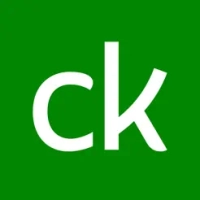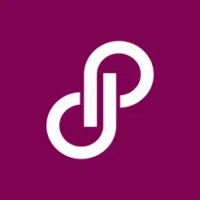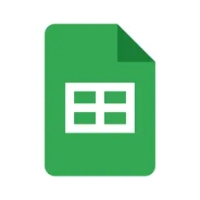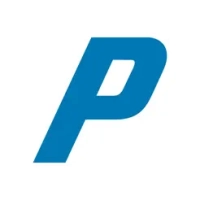When is the Best Time to Post on Facebook?
29 min read Discover the optimal posting time on Facebook to optimize engagement. Begin by reviewing our guide to determine the optimal hours for visibility and reach. By analyzing your target audience and their behavior patterns, you can tailor your posting schedule to maximize interaction and increase the likelihood of your content being seen. Additionally, utilizing Facebook Insights can provide valuable data on when your followers are most active online, allowing you to schedule posts during peak times for optimal impact. Experimenting with different posting times and monitoring the results can help you refine your strategy and ultimately enhance your social media presence. July 29, 2024 10:42
The impact of your social media marketing efforts can be substantially enhanced by comprehending the optimal posting times on Facebook. Posting content at the optimal time for your audience to view it can result in significantly increased engagement and reach, as Facebook remains one of the primary social media platforms for connecting with audiences.
The Facebook algorithm, which prioritizes content based on a variety of factors, including post timeliness, emphasizes this point even more.
Note: Our observations are derived from an exhaustive investigation of 1 million actively administered accounts, which collectively publish approximately 500,000 updates. This extensive dataset enables us to identify high engagement periods with remarkable precision.
The purpose of this article is to show you how to effectively schedule posts on Facebook for maximum visibility.
When is the best time to post on Facebook?.
We have determined that the optimal posting times are typically between 10 a.m. and 3 p.m. on weekdays, with a particular emphasis on Tuesday through Thursday, according to our research and analysis. Users are more likely to be active on their accounts during these hours, which makes it an ideal time to captivate their attention.
However, it’s important to keep in mind that these timeframes might vary based on numerous circumstances. This includes your specialization, the geographical region or time zone of your audience, the particular industry you are in, and the distinctive features of your target audience. All of these play a key role in selecting when to share anything on Facebook.
For example, a company targeting professionals may discover different best times compared to one marketing young people or teenagers. By evaluating your individual audience interaction patterns and experimenting with alternative publishing schedules, you can adjust your post-timing approach to better correspond with the habits of your followers.
This maximizes the impact of your content by reaching your target audience at the optimal time.
Additionally, it is important to consider the time zones of your target audience, as well as any cultural or regional differences that may impact when they are most active on social media. By taking these factors into account, you can tailor your posting schedule to ensure that your content is seen by the right people at the right time. Furthermore, monitoring the performance of your posts and analyzing the data can provide valuable insights into when your audience is most engaged, allowing you to refine your timing strategy for even greater success. Ultimately, by being strategic and flexible in your approach to posting on Facebook, you can maximize the effectiveness of your social media marketing efforts and drive better results for your business.
What time of day is best to post on Facebook?
Each day of the week brings distinct chances for optimizing your posts’ exposure and interaction on Facebook. Here’s a breakdown of the optimum moment to publish each day:
1. The best time to post on Facebook is Sunday.
The optimum time to post on Facebook on Sunday is early in the morning, by 9 a.m. This is when many individuals are resting at home and scrolling through their feeds.
2. Monday is another great day to post on Facebook, with the best times being around 11 a.m. and 1 p.m. as people are getting back into work mode and checking their social media during breaks.
3. Tuesday and Wednesday are also good days to post, with the peak times being around 9 a.m. and 3 p.m. when people are taking breaks or winding down for the day.
4. Thursdays and Fridays see higher engagement in the afternoons, around 1-3 p.m., as people are looking forward to the weekend and may have more time to browse social media.
5. Saturdays are not as busy on Facebook, but the best time to post is in the afternoon, around 1-2 p.m., when people are out and about or relaxing at home. By strategically scheduling your posts during these optimal times, you can increase visibility and engagement with your audience.
2. The best time to post on Facebook is Monday.
The most advantageous time to post on Facebook on Monday is around 12 p.m. This scheduling captures individuals during lunch breaks, when they are inclined to check their social media. Posting on Facebook during peak times can significantly impact the reach and engagement of your content. By targeting specific days and times when your audience is most active, you can maximize the impact of your posts. Utilizing tools and analytics to determine the best posting times for your target audience can help boost your social media strategy and increase overall performance. Remember, consistency is key when it comes to posting on social media, so be sure to schedule your content accordingly to maintain a strong online presence.
3. The ideal time to post on Facebook is Tuesday.
The peak period on Tuesday is 5 p.m. This is when many people are winding down their workday and are more inclined to interact with information.
By posting during this optimal time, you can ensure that your content is reaching the largest audience possible and generating the most engagement. In addition to scheduling posts for Tuesdays at 5 p.m., it is also important to continue analyzing your audience's behavior and adjusting your posting schedule accordingly. By staying proactive and responsive to your audience's preferences, you can continue to grow your online presence and achieve your social media goals.
4. Wednesday is the ideal day to post on Facebook.
Posting at 3 p.m. on Wednesday can be effective because mid-week posts can reach users who are looking for a break from their hectic schedule.
By analyzing the engagement and reach of your posts on Wednesdays at 3 p.m., you can determine if this time is indeed the most effective for your audience. It is important to continue monitoring and adjusting your posting schedule to ensure that you are maximizing your reach and engagement. By staying adaptable and responsive to your audience's behavior, you can continue to improve your social media strategy and achieve your goals.
5. The best time to post on Facebook is Thursday.
Thursday mornings at 11 a.m. are excellent. People are preparing for the weekend and are more active online, seeking updates and interacting with articles.
By analyzing the data and trends on your Facebook page, you can pinpoint the specific times that work best for your audience. By consistently posting at these optimal times, you can increase the likelihood of your posts being seen and engaged with by your followers. Additionally, taking advantage of Facebook's scheduling feature can help you maintain a consistent posting schedule, even during busy times. Remember, staying flexible and willing to adapt to the ever-changing landscape of social media is key to success in this digital age.
6. Friday is the ideal day to post on Facebook.
On Friday, the optimum time is in the early afternoon, about 1 p.m. When users start to peruse their feeds and wind down from the week, engagement levels rise.
7. Saturday is the ideal day to post on Facebook.
It is effective to post on Saturdays at 10:00 a.m. It's an excellent idea to grab their attention when they check Facebook, since many people do it before beginning their weekends.
When Is It Best to Post on Facebook, Per Country?
Due to various factors such as audience demographics, time zones, cultural norms, and optimal internet usage hours, there are significant differences in the peak times for posting on Facebook across different countries.
The average time for engagement for a few important nations is shown below:
United States: When both the East and West Coasts are online and active, the optimum hours are often between 8 a.m. and 12 p.m.
United Kingdom: Posting should be done between 1 and 4 PM to take advantage of the post-lunch period, when people are most likely to check their social media.
India: The best hours are in the early evening, from 6 to 9 p.m., when people get home from work and school.
Canada: The prime time falls between 8 a.m. and 12 p.m. in all time zones, much as in the US, to coincide with morning activities.
Australia: Posting between 7 and 9 p.m. is a good time to reach people because it coincides with their free time after dinner.
Japan: In the early evening, between 8 and 10 PM, when people are twiddling with their day, is the ideal time.
Brazil: The hours when people use Facebook the most are late afternoon and early evening, specifically between 4 and 7 PM.
Germany: The optimum time is usually midmorning, from 10 a.m. to 1 p.m., since this corresponds with the late-morning surge in internet activity.
South Korea: You can effectively reach a large audience in the evening, especially between 6 and 9 p.m.
Pakistan: The peak hours for Facebook usage are late evening, between 8 and 10 PM, when people finish their workday.
Industry-Specific Facebook Posting Timings That Work Best
Due to differences in consumer behaviors and interests, many sectors have different peak hours for Facebook participation. To determine the optimal times for your content, it is essential to investigate and evaluate facts relevant to your sector. Below is a summary of the major industries:
E-Commerce: Generally speaking, Monday through Wednesday at approximately noon is the ideal time to post on Facebook in order to get likes. Customers often explore and purchase online during their lunch periods.
Technology: Midweek publishing works best at 10 a.m. on Tuesdays and Wednesdays. This time coincides with the times when tech aficionados search for news and updates.
Food: Later in the afternoon, between 3 and 5 PM, is the most popular time for posts about food, as this is when people start to consider dinner plans and going out to eat.
Health & Fitness: Early mornings, around 6 AM, are ideal for reaching people who are seeking inspiration or health advice before beginning their day.
Media & Entertainment: If you're looking for weekend entertainment ideas, Friday and Saturday between 6 and 9 PM are good times to post videos.
Education: Late afternoons, from 4 to 6 p.m. on weekdays, work best, especially when parents and students are engaged on the internet after school.
Finance: By posting in the middle of the workweek (Tuesday through Thursday), between 9 AM and 11 AM, professionals and consumers interested in financial news and tips are reached.
Travel: The best hours for feed posts are Thursday and Friday evenings, from 7 to 9 PM, when people are most likely to be planning weekend trips or vacations.
Is it better to post on Facebook during the week or on the weekend?
Your audience and content strategy will play a major role in deciding when is the ideal time to publish on Facebook: on the weekends or during the week. The advantages and ideal posting times for each are broken out here:
During the week, there is usually a consistent level of engagement since users check Facebook during their commutes, breaks, and after work. These days are perfect for constant exposure because of their frequency. Between 10 a.m. and 3 p.m., especially on Tuesday through Thursday, when user activity is at its peak, is the ideal time to share.
On weekdays when individuals are focused on their job, industry news, instructional postings, and professional material do well. Weekends are a great time to get high engagement since individuals have more time to explore and connect with more intimate, lighthearted, or leisurely content.
The best hours to publish are in the early mornings, around 10 a.m., and the early evenings, around 6 p.m. These periods work best for lifestyle, entertainment, leisure, and community-focused material. The best time to publish on Facebook may vary depending on your unique objectives and the kind of material.
Weekdays are best for delivering more professional or educational content to an audience while they go about their everyday business, and weekends are best for drawing users in with more lighthearted amusement.
Even with that, there's a general consensus that posting on Facebook on weekdays is best done during peak hours, such as 12 PM to 2 PM and 7 PM to 9 PM. Understanding your audience's habits and preferences is essential to maximizing engagement on your posts.
On Facebook, when is the worst time to post?
Just as important as figuring out the best day and time to post on Facebook is figuring out when it's least effective to post. The worst time to publish is usually late at night, notably between 8 p.m. and 8 a.m. Because most individuals are sleeping or settling down during these hours, user activity drastically decreases, which lowers engagement and reach.
In order to avoid publishing during the times when their audience is least engaged, businesses and content producers must be aware of these off-peak hours. By doing this, you can make sure that your followers see your postings and that your material is seen. You may increase the visibility and effect of your posts on Facebook and get higher levels of interaction by steering clear of certain times when there is less activity.
What Is Your Personal Ideal Facebook Posting Time?
There are various methods for determining when is the ideal time to post on Facebook, some of which are as follows:
1. Make use of Facebook insights.
Numerous details on your followers are available via Facebook Insights, including the times when they are most active on the network. Just choose the page by tapping your name in the upper right corner of Facebook, and then click on Insights from the menu on the left. These data allow you to pinpoint the precise moments when audience involvement peaks, which can help you plan your post schedule.
. Conduct A/B testing. Another way to determine the ideal posting time on Facebook is to conduct A/B testing. This involves posting at different times of the day and tracking the engagement levels for each post. By comparing the results, you can identify patterns and trends that will help you pinpoint the most effective posting times for your audience. Additionally, you can use tools like Hootsuite or Buffer to schedule posts at different times and analyze the performance data to optimize your posting schedule.
2. Conduct an independent study.
Try posting on various days and at different times to see which gets the most interaction. Maintain a thorough log of the comments, likes, and shares that every post gets. Over time, examine this data to hone in on and ascertain the ideal publishing timetable. This procedure guarantees your target audience on Facebook the best possible reach and engagement.
. Utilize Facebook insights. Facebook Insights provides valuable data on the demographics, behavior, and preferences of your audience. By regularly monitoring this information, you can identify trends and patterns that will inform your posting strategy. Pay attention to metrics such as reach, engagement, and click-through rates to understand what content resonates most with your followers. This data-driven approach will help you tailor your posts to maximize engagement and drive results on the platform.
3. Take audience demographics into account.
Your publishing approach may be greatly impacted by knowing the demographics of your audience, including their work schedules, time zones, and internet habits. Consider when your target audience is most likely to be online when scheduling your posts.
You can design a customized schedule that optimizes visibility and engagement by analyzing these factors, which guarantees that your content reaches your audience at their most responsive and active moments.
. Utilize analytics tools to track performance. By utilizing the analytics tools provided by social media platforms, you can track the performance of your posts and gain valuable insights into what content resonates with your audience. Monitoring metrics such as reach, engagement, and click-through rates can help you refine your publishing strategy and optimize your content for better results. Additionally, analyzing the data can also help you identify trends and patterns that can inform future content creation and posting schedules. Overall, staying informed and adaptable based on data-driven insights is key to maintaining a successful social media presence.
4. Keep an eye on your rivals.
Keeping an eye on when your rivals publish and get a lot of interaction might provide insightful information. Examine their publishing schedules and interaction levels to determine when it would be best to publish your own content.
By doing this, you can improve your Facebook strategy and effectively compete for the attention of your audience by learning from the mistakes and successes of others in your industry.
5. Examine your previous results.
Examine the performance of your earlier postings to find patterns in the level of interaction. Posts that have done well in the past might suggest better days or times to publish related material. You may adjust your content strategy by using this data to learn which kinds of articles your audience responds to the most at certain times.
6. Maintain consistency.
Posting often helps preserve exposure and interaction. You may help create a predictable pattern that your audience can expect and react to more actively by publishing often during periods when you've seen more interaction. Over time, your presence on the platform will be strengthened, and your followers will develop a habit thanks to your regularity, which will also increase your engagement rates overall.
Consistency is key to building a strong online presence and keeping your audience engaged. By establishing a regular posting schedule and sticking to it, you can create a sense of reliability and trust with your followers. This can lead to increased visibility and a higher likelihood of your content being seen and shared. Additionally, by consistently posting at times when your audience is most active, you can maximize the impact of your content and increase the chances of it being seen and interacted with. Overall, maintaining consistency in your posting schedule is crucial for building a loyal following and driving engagement on social media platforms.
Questions and Answers
What is the ideal time on Facebook to post reels?
Since users are more likely to interact with video content during their free time in the evening, between 6 and 9 PM on Facebook, this is generally the best time to post reels.
Is posting in the morning or at night preferable?
Posting first thing in the morning tends to get more constant activity since it captures those who check Facebook often. Posts made at night may miss periods of high user activity.
What Elements Affect Facebook's Ideal Posting Time?
Important considerations are the type of content, the audience's demographics, their usual online schedules, and general engagement patterns found in related content within your sector.
Does my post type impact when it is best to post on Facebook?
Indeed, various content types could work better at different times. For instance, readers may see more instructive postings in the morning, yet they may be more popular with amusing material in the evening.
When scheduling Facebook posts, should I take time zone differences into account?
Yes, particularly if you serve a worldwide clientele. Engagement may be greatly impacted by scheduling content for the time zone in which the bulk of your audience lives.
When Is It Appropriate to Try Different Posting Times?
As platform algorithms and audience preferences change, it's a good idea to do experiments every few months. Testing often helps in optimizing posting tactics and adjusting to changes.
User Comments (0)
Popular Apps








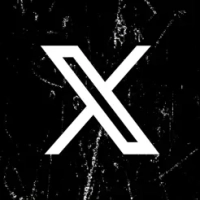

Editor's Choice

